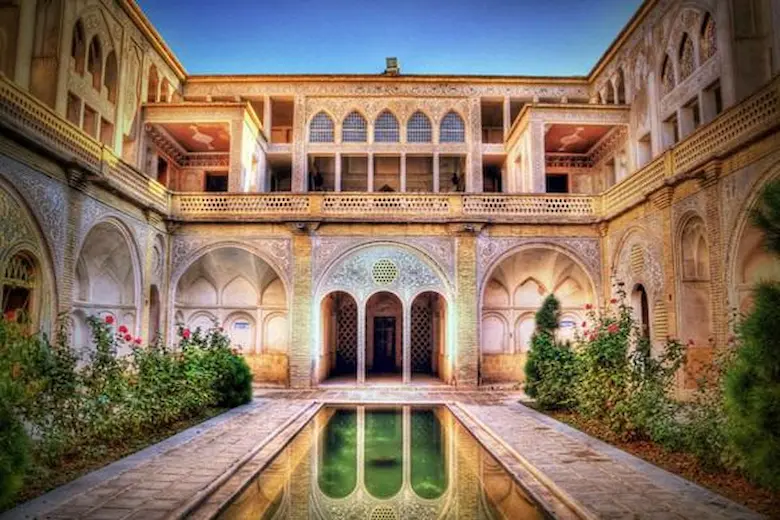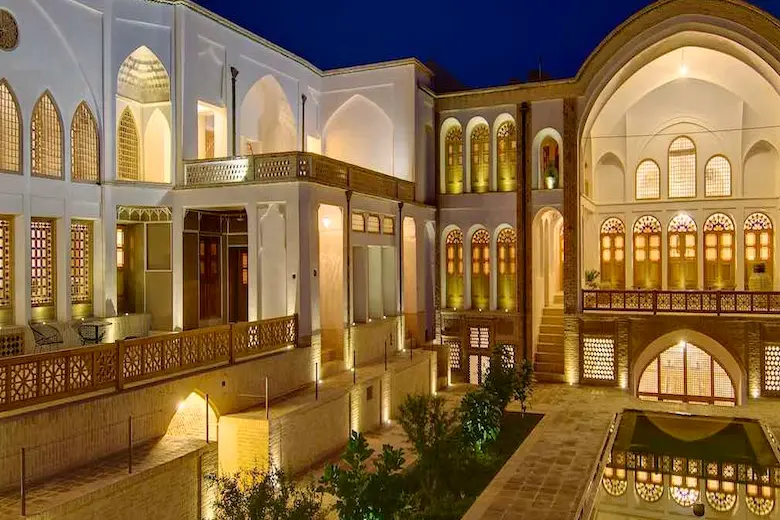Iranian Islamic architecture is known as one of the most prominent architectural styles, especially in the Asian continent. This style is the result of a centuries-old combination of Islamic architectural style and authentic Iranian architectural style. From the past to the present, due to the cultural similarities between Iranians and Muslims, we have witnessed numerous collaborations between artists of these two nations. This collaboration continued in the field of architecture, and the result was the creation of the Iranian-Islamic architectural style, which today has many fans all over the world, especially in the Middle East and Iran. But the introduction of this masterpiece style does not end with these few sentences. In the rest of this article, join us as we introduce and examine 0 to 100 Iranian-Islamic architectural styles.
What is Iranian Islamic architecture?
Iranian Islamic architecture is one of the most prominent architectural styles in the world, which offers a combination of Iranian art and Islamic principles. This architectural style was formed after the arrival of Islam in Iran, and its characteristics are deeply intertwined with cultural, religious, and social concepts. In Iranian-Islamic architecture, symmetry, proportion, and harmony of building components are the main features. The use of elements such as domes, minarets, altars, and beautiful tiling distinguishes this style from other architectural styles. The use of turquoise blue, green, and gold in the tiling, along with calligraphic and geometric decorations, has given this type of architecture a unique appearance.


History of Iranian Islamic architecture
The history of Iranian Islamic architecture dates back to the early Islamic period, when Iranian architects attempted to combine Islamic principles with earlier Iranian styles. The Grand Mosque of Isfahan and the Sheikh Lotfollah Mosque are examples of this unique combination. These buildings were considered architectural masterpieces even in their time, and they still stand strong and enduring today after many centuries. Moreover, many of these buildings are still recognized as icons, inspiring many architects to use them for their modern designs.
However, throughout history, this architectural style evolved and reached its peak in different periods such as the Seljuks, Safavids, and Qajar. Each period brought its own specific influences. For example, during the Safavid era, colorful tiling and geometric designs were used more extensively in buildings.
Principles of Iranian Islamic architecture
The principles of Iranian Islamic architecture are based on symmetry, piety, and respect for human and divine privacy. These principles are designed in such a way that architectural spaces, in addition to their practical functions, provide peace and meaning to the human soul.
One of the key concepts of this architecture is the focus on “introversion.” Buildings are usually built with a simple exterior and a rich and detailed design on the interior. This feature indicates a focus on spirit and meaning rather than appearance. It is worth noting that in the Iranian Islamic architectural style, great attention is also paid to preserving the privacy of individuals. This means that we generally see taller walls and slightly smaller windows than usual.


The role of art and beauty in Iranian Islamic architecture
Iranian Islamic architecture pays special attention to art and beauty, and this is evident in its detailed and intricate decorations. Colorful tilework, muqarnas, and Islamic calligraphy are among the symbols of this beauty. Given the high diversity that has always existed in the Iranian architectural style, this diversity was combined with traditional designs in the Islamic architectural style to create such masterpieces today.
The use of Quranic verses and Islamic motifs in decorations not only adds to the visual beauty of the buildings but also demonstrates deep religious concepts. Each component of the building is designed to be a symbol of divine order and, at the same time, can create an attractive harmony due to its high coordination with other components.
The best examples of Iranian Islamic architecture in Iran
Iran is the cradle of Iranian Islamic architecture and has unique examples of this style. The Shah Mosque in Isfahan, with its dome and turquoise tiles, is one of the most famous examples of this style.
The Jame Mosque in Yazd and the Goharshad Mosque in Mashhad are other masterpieces of this style. Each of these buildings expresses profound Islamic concepts not only structurally but also spiritually.
What effect has Iranian Islamic architecture had on lifestyle?
Iranian Islamic architecture has greatly influenced the lifestyle of Iranians. For example, the design of old Iranian houses with central courtyards was based on Islamic principles and privacy.
By creating peaceful and inspiring spaces, this architecture has made life more pleasant for its residents and strengthened their sense of spiritual connection with nature and the Creator.
The difference between Iranian Islamic architecture and other architectural styles
One of the main differences between Iranian-Islamic architecture and other styles is its focus on spiritual and religious concepts. While Western architecture emphasizes the appearance of buildings, Iranian-Islamic architecture focuses on the content and the relationship between man and God.
Also, the use of elements such as domes, minarets, and artistic tiling distinguishes this style from other styles. These features are a symbol of the cultural and religious identity of Iranians.


How has Iranian Islamic architecture inspired modern architecture?
Modern Iranian architecture has been greatly influenced by Iranian-Islamic architecture. Many contemporary architects have tried to preserve the principles and concepts of this style in their designs. For example, the use of symmetry and introverted spaces in the design of new houses and mosques is an example of these influences. This combination has not only preserved the Iranian identity but also presented the functional aspects of modern architecture.
Final Words
As you can see, in this article, we have introduced and thoroughly examined the Iranian-Islamic architectural style from 0 to 100. We learned that this masterpiece style emerged from the combination of Iranian and Islamic architectural styles, and due to the high coordination between the components and techniques of this style, we are witnessing the creation of an extraordinary harmony. We thank you for your support until the end of this article, and we hope that the information provided has been useful to you. Ohaddeco Group specializes in the design and implementation of wooden acoustic wall covering and wooden thermowall. In addition, our group is also active in the design of LSF structure. You can contact our experts through the communication bridges for more information and free consultation.




